Illuminations: Henry Joy McCracken, County Antrim Rebel
By: J. Michael Finn
Henry Joy McCracken was born in Belfast on August 31, 1767 into two of the city’s most prominent Presbyterian industrial families. He was the son of a ship owner, Captain John McCracken, and Ann Joy, daughter of Francis Joy, of French Huguenot descent.
The Joy family made their money in linen manufacturing. McCracken’s maternal grandfather, Francis Joy, also owned important paper mills and was the founder of The Belfast Newsletter, Ireland’s oldest newspaper.
Henry was the older brother of political activist and social reformer Mary Ann McCracken, with whom he shared an interest in Irish traditional culture. Henry was brought up in the linen business, and at the age of twenty-two was the manager of a cotton factory in Belfast.
Belfast Harp Festival
In 1792, McCracken was one of the organizers of the Belfast Harp Festival, which gathered aged Irish harpers from around Ireland, and helped preserve Irish traditional music by having their music transcribed by Edward Bunting.
McCracken became interested in republican politics from an early age, and along with other Protestants, notably Robert Emmet, Thomas Russell, James Napper Tandy, and Theobald Wolfe Tone, formed the Society of the United Irishmen in 1791 in Belfast.
The Society of United Irishmen, also known as the United Irishmen, was a sworn society formed in the wake of the French Revolution to secure “an equal representation of all the people” in a “national government.” The movement included Protestants, Catholics and Dissenters (Dissenters were Irish Presbyterians who were often discriminated against because they were not members of the established church of England).
United Irishmen
The formation of the United Irishmen had a promising start. It was organized under the deliberately inoffensive cover name of “The Muddlers Club.” The mostly-Presbyterian group held their meetings in a pub, Peggy Barclay’s Tavern, on a Belfast alleyway called Sugarhouse Entry.
At first their plans were peaceful, until hopes of a self-governing Ireland disappeared under repressive English policies in 1795. Thereafter, the Muddlers set themselves on a path to violent confrontation with the law.
McCracken regularly travelled throughout the country using his cotton business as a cover for organizing other United Irish Societies in Ireland. He was arrested in October 1796 and held in Kilmainham Jail in Dublin for thirteen months. While imprisoned there with other leaders of the United Irishmen, McCracken fell seriously ill and was released on bail in December 1797.
United Irishmen Rebellion
Following the outbreak of the United Irishmen Rebellion in Leinster in May 1798, the Antrim organization met on June 3, 1798 to decide on their response. The meeting ended inconclusively, with a vote to wait for French aid before taking any direct action.
A new meeting of delegates was held in Templepatrick on June 5, 1798, where McCracken was elected general and supreme commander for Antrim; he quickly began planning military operations. On June 6, he issued a proclamation, calling the United Irishmen to arms. Of the 21,000 members on the rolls in his district, approximately 9,000 responded to the call.
McCracken formulated a plan for all small towns in Antrim to be seized after which rebels would converge upon Antrim town on June 7, 1798.
McCracken led one of the columns that attacked the town of Antrim. In their first encounter with English troops, the United Irishmen were successful, putting to flight a body of the 22nd Dragoons, causing them a loss of five officers, forty-seven men and forty horses.
The English troops counter-attacked with reinforcements, re-entered the town, and drove out the rebels. In the counter-attack, over 150 rebels were killed and wounded in the town, and over 200 fell in the rout that followed.
It is reported that while McCracken acted with bravery and daring, many of his officers lacked his spirit and determination. In addition, McCracken had expected support from the Catholic Defenders group; however, that support did not appear.
For several weeks that followed, McCracken and his remaining force were on the run near the Slemish Mountain in County Antrim. The rebels were well treated by the country people, who made every effort to conceal them from the English forces.
McCracken’s sister, Mary Ann, made contact with him and arranged for him to have money, a change of clothing, a forged pass and passage to America on a foreign vessel departing from Belfast Lough. On the eve of his escape, he was recognized by a former business associate and was arrested.
Court Martial
He was lodged in Carrickfergus Castle and was tried by court-martial the next day. Using perjured testimony, the court sentenced him to death. In his cell, McCracken told his sister to inform Thomas Russell “Tell him I have done my duty.”
Several approaches were made to McCracken during and after the trial suggesting that he would receive clemency in exchange for information on the United Irishmen leaders. McCracken refused all such offers to inform.
He was hanged at Corn Market, High Street, Belfast, on July 17, 1798, on land his grandfather had donated to the city. His sister Mary Ann had arranged to have a doctor present at the hanging lest there be a chance of resuscitation, but the hangman had done his job. Henry Joy McCracken was dead at age 30.
The body was buried in St George’s Churchyard. Some years later, when part of the ground was sold off, some of the graves were disturbed. McCracken’s remains were reburied in the cemetery at Clifton Street, where a memorial was erected.
After her brother’s execution, Mary Ann took over the care of his illegitimate daughter, Maria, who was not universally accepted in her wider family. Mary Ann lived with Maria and her family until her death on July 26, 1866, at the age of 96 years.
His comrade in arms James Hope said of him, “When all our leaders deserted us, Henry Joy McCracken stood alone, faithful to the last. He led on the forlorn hope of the cause of Antrim, and brought the government to terms with all but the leaders. He died rather than prove a traitor to the cause.”
An Irish traditional song, Henry Joy, ends with the following verse:
Ah boys, for Ireland’s cause we fought, for her and home we bled
Our pikes were few but hearts were true, and five to one lay dead
And many a lassie mourned her lad and mother mourned her boy
For youth was strong in that gallant throng who followed Henry Joy.
If you would like to read more about 1798, look for the book The Year of Liberty: The History of the Great Irish Rebellion of 1798, by Thomas Pakenham, Random House, 1969.
*J. Michael Finn is the Ohio State Historian for the Ancient Order of Hibernians and Division Historian for the Patrick Pearse Division in Columbus, Ohio. He is also Chairman of the Catholic Record Society for the Diocese of Columbus, Ohio. He writes on Irish and Irish-American history; Ohio history and Ohio Catholic history. You may contact him at [email protected]



